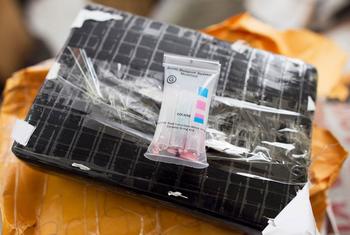Relatives of Kware deaths victims to rely on DNA for identification

On Thursday, police took up to 28 sacks containing human body parts to the city mortuary, which is managed by Nairobi County.
Relatives and friends of persons whose bodies were collected at Kware dumpsite in Mukuru Kwa Njenga will have to rely on DNA testing to identify their kin.
Khalid Hussein, the lead human rights activist, said while speaking at the City Mortuary on Thursday afternoon that the bodies have been dismembered and decomposed beyond recognition.
More To Read
- DCI offers Sh1 million reward for capture of prime suspect in Kware killings Collins Jumaisi
- Nairobi County issues 7-day disposal notice for 295 unclaimed bodies at City Mortuary
- Report reveals Albert Ojwang was dead, bruised and cold on arrival at Mbagathi Hospital
- Post-mortem shows Albert Ojwang did not hit his head on a wall as police reported
- Kenyatta National Hospital issues seven-day ultimatum for collection of 124 unclaimed bodies
- Rights groups fear cover-up in Mukuru kwa Njenga mass deaths
"Friends and relatives are now relying on the clothing of the deceased in a bid to identify their dead kin. But even with that, they have to wait for DNA tests to be conducted," said Khalid.
Police took up to 28 sacks containing human body parts to the city mortuary on Thursday, which is managed by Nairobi County.
On Wednesday, two additional sacks containing human body parts and limbs were brought to the mortuary.
According to Khalid, identification and ascertaining the nature of deaths could take a longer period because some sacks contain no full body parts with torsos only.
On Thursday, the family of Josephine Mulongo Awino who is among those whose bodies were found in the dumpsite, camped at the mortuary seeking to properly identify her, only to resort to DNA analysis at the government chemist following the nature of decomposition.
Although, according to Khalid, no body has been brought with bullet wounds, the nature of the killings attributed to the said bodies suggests strangulation, stabbing, and hitting with crude and blunt objects.
"The nature of the killings suggests that they died as a result of torture that had characteristics of stabbing, strangulation, and beating with crude or blunt weapons," said Khalid.
Chief government pathologist Dr. Johansen Oduor announced on Wednesday that none of the bodies recovered from the Kware dumpsite in Embakasi South had gunshot wounds.
Dr. Oduor, in collaboration with a team from the Directorate of Criminal Investigations (DCI), finalised the postmortem exercise on nine female bodies at the City Mortuary.
He said that their findings revealed that some bodies had missing lower limbs and other bodies had cuts at the lumbar area (lower back), most of which were dismembered.
The contents of some of them were lower limbs that were amputated from the knees downward, and they were two right legs and two left legs," he said.
"They were from the waist to the knee, which were three of them, and then there was another trunk from the waist upwards, which we assigned the cause of death as strangulation."
He further revealed that some bodies had deep head injuries, and the persons were believed to have died from severe bleeding.
"There was also the whole body of a female who we examined, and we found that she had head injuries."
Dr. Oduor indicated that the main task lies in correctly identifying the dismembered parts, assembling them, and establishing the cause of death.
Top Stories Today










































